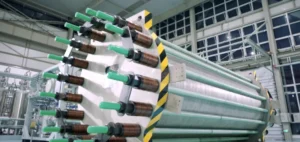Borealis and VERBUND are planning a joint project in which renewable hydrogen will be used in the production of industrial products. Indeed, hydrogen will be used in the production of fertilizers, melamine and technical nitrogen. A partnership that takes place in the framework of the Important Project of Common European Interest (IPCEI).
Decarbonizing industrial processes
Borealis and VERBUND are thus banking on renewable hydrogen. It is part of the decarbonization of products and industrial processes in areas that are difficult to electrify. This project aims to produce fertilizers, melamine and technical nitrogen in a more sustainable way.
Michael Strugl, CEO of VERBUND, wants to be a player in the decarbonization of the industry:
“As an industry partner, we implement joint projects that contribute to the decarbonization of industrial processes and the achievement of climate goals.”
Thomas Gangl, CEO of Borealis, agrees:
“This joint effort is another example of how we are reinventing essential products for sustainable living.”
The smelter is expected to start up in 2025 with annual CO2 emission reductions of up to 90,000 tons.
A European project
The Important Project of Common European Interest (IPCEI) is a European mechanism to promote innovation in industrial fields. The selected projects must show technological leadership. Thus, the renewable hydrogen will come from a 60MW industrial electrolysis plant using demineralized water.
The European Commission approves this renewable hydrogen project. This validation gives the green light to a whole series of renewable hydrogen projects in Europe. It represents an alternative to natural gas in the production of ammonia.






















